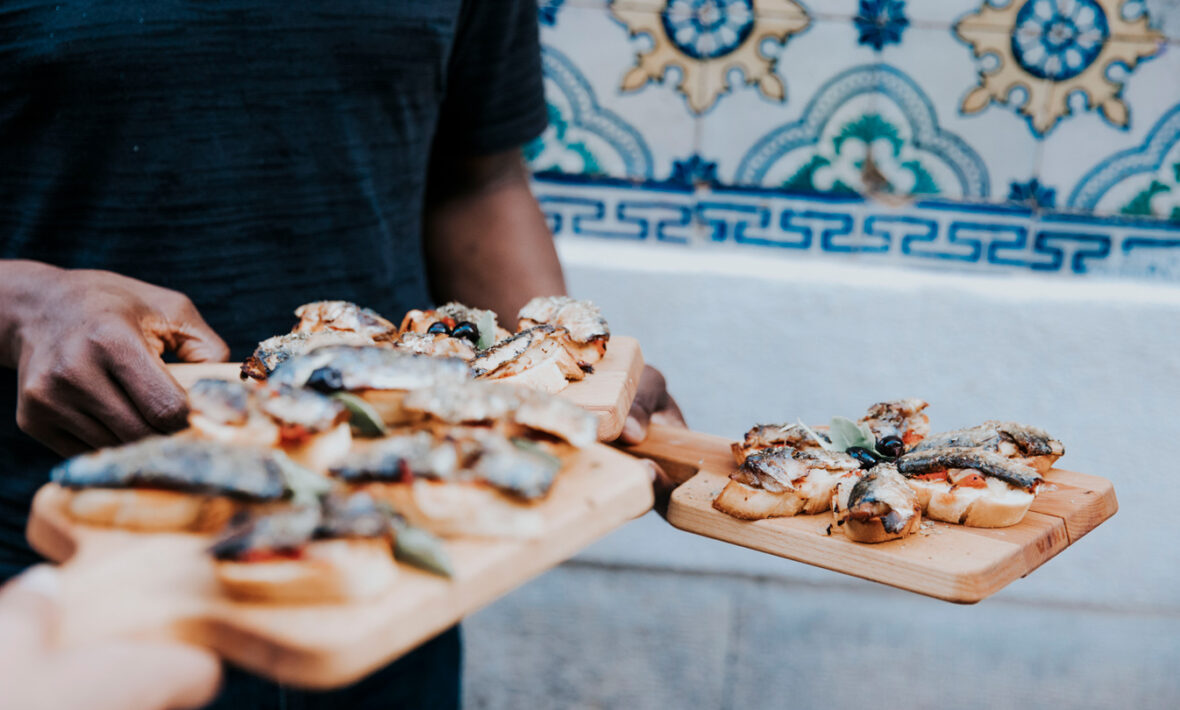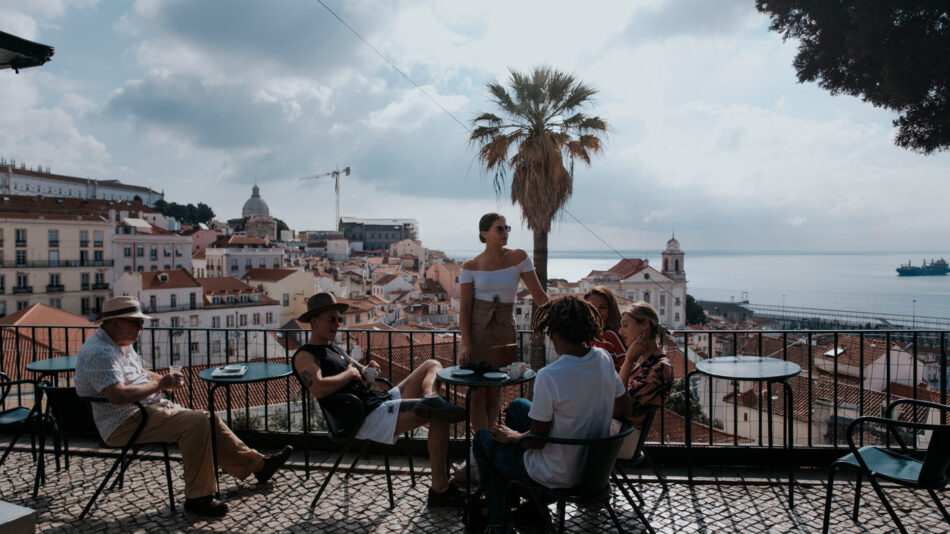
Travel to Lisbon in June, during the Saints Period, and the city comes alive in a festive tumble of colour, costumes and folk music. Even better, 12-14 June 2020 is Santo Antonio Festival (aka the Lisbon Sardine Festival), when it’s not just the sultry sound of nylon-stringed guitars that fills the air. Pause and take a breath and it’s impossible to avoid the alluring aroma of blistered sardines, licked by the flames of countless grills. In fact, 13 sardines are eaten every second at this epic outdoor street-party-meets-festival!
Has a country ever been as intimately associated with an item of food as Portugal is with the humble sardine? Scotland and haggis, maybe? The USA and hamburgers? In terms of lasting cultural and historical significance, nothing really comes close.
Thanks to its Atlantic coastline, Portugal has always been blessed with fresh seafood, but for all the delicious salt cod or mackerel on offer, only the sardinha has become a true national icon. It’s been described as ‘the nation’s third marvel, after soccer and sunlight’, which is pretty good company in a sun-drenched country where football is a religion.
The sardine was first truly appreciated as an important staple by the Romans, who couldn’t believe the sheer abundance of these silvery fish, so rich in protein and nutrition. It quickly became a crucial part of the region’s trade. While delicious when grilled fresh out of the ocean, in recent centuries it has become the heart of Portugal’s tradition of preserved seafood, or conservas.

Image source:Contiki
Tinned fish has been part of Portugal’s culinary heritage since the 1800s. It was the country’s original fast food: a cheap source of protein in times of economic turbulence. Through war and peace, growth and austerity, tinned sardines and a hunk of bread were all anyone needed for a nutritious meal.
Across the world, tinned food and gourmet food tend to be on opposite ends of the spectrum. In the UK, we have the rich tradition of SPAM, baked beans, spaghetti hoops… (you get the idea). But in recent years, foodies have started to shine the spotlight on Portugal’s artisanal canneries and delicious tinned sardines. Always made with high-quality fish, canned fresh out of the ocean, conservas de sardinha are considered a delicacy, not a cheap necessity. They’re an increasingly popular souvenir, too.
https://www.instagram.com/p/B4RuIBjAjNC/
Head to Lisbon restaurants such as Can the Can, and tinned sardines are part of a sophisticated cuisine, served in gourmet recipes. In Porto, you can visit Tábua Rasa, where diners can order tinned sardines as part of elaborate and curated boards, served alongside some of the finest fresh ingredients Portugal has to offer.
https://www.instagram.com/p/78kUb5htUQ/
But though the sardine has been a mainstay in Portugal for millennia, the future looks bleak for the fishermen and canneries. Sardines don’t like warm water very much, and as climate change heats the Atlantic, they’re getting harder and harder to catch. Inevitably, they’re starting to swim towards cooler shores.
The Portuguese sardine population began to decline a decade ago, and the problem is getting rapidly worse. At the dawn of last year’s Saints Period, a fearful fisherman lamented: “We listen to it all year round that maybe this will be the year – the year we will not have sardines.”
Unless we can turn the tide on the climate crisis, Portugal may lose a vital cog of its economy. But for now, there’s no greater pleasure than sitting in a Lisbon restaurant on a balmy June evening for the Lisbon Sardine Festival, tucking into these delicious, silvery fish. If that isn’t reason enough to make this year your time to visit, we don’t know what is…

Image source:Contiki






